
Tourist Guide Paris

- Paris
- Paris-Eiffel-Tower
- Paris-Champs-Elysees
- Arc-de-Triomphe
- Notre-Dame-de-Paris
- Sacre-Coeur-Basilica
- Madeleine-Church
- Les-Halles
- Montparnasse
- Montmartre
- Pantheon-Paris
- The-Statue-of-Liberty
- Hotel-de-Ville-Paris
- Louvre-Paris
- Musee-d-Orsay
- Musee-Rodin
- Opera-Garnier-Paris-Opera
- Centre-Pompidou
- La-Defense
- City-of-technology-and-science
- New-National-Library-of-France
- Night-Life-of-Paris
- Moulin-Rouge-Paris
- Les-Invalides
- Pere-Lachaise-Cemetery
- Catacombs-Paris
- Parisian-Sewers
- Paris-Shopping
- Flea-Markets-Paris
- Paris-by-boat
- Parks-in-Paris
Paris – City of Love
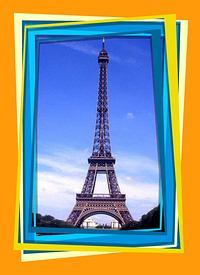
Paris is one of France’s most famous cities. Known in particular through the historical background and the French Revolution, Paris annually attracts countless numbers of tourists. The ‘city of love’ as it is sometimes called, awaits with many attractions including the The Eiffel Tower, the Hôtel de Ville, Sacré Coeur, the The Arc de Triomphe, the little sister of the Statue of Liberty and of course the Catacombs to name but a few. No other European city has so many attractions to offer and even the Parisian night life is at least worth a visit. Above all this neighbouring country offers endless possibilities for a first class vacation. City visitors will be thrilled but even swimming fans will obtain their money’s worth; after all France is surrounded by two oceans.
However, true adventure is in making a trip to Disneyland, Paris. Old and young will be able to enjoy the attractions here. Couples in love should ideally visit Paris alone and enjoy their trip with many stops at romantic monuments and visits to sensual cafes, making Paris a dream location for ‘turtle doves’. To find Hotels in Paris isn't a problem. Even young people are excited as Paris offers a by no means insignificant amount of shopping-paradises, above all the Champs-Elysées with its shopping streets and dreams. The nightlife is shaped by the French attitude to life where the terms “freedom, equality and brotherhood” are not just slogans, rather a fact because if one has planned an overnight stay in Paris, it is better off to ask where should one go rather than what one wants to do’. The choice is in fact so large that one night will hardly be sufficient. Paris captivates with its contrast between hustle and bustle, serenity and modesty. Modern meets the traditional and hence one will find the well travelled alongside the typical natives!
The Eiffel Tower

The Eiffel Tower is also known as Tour Eiffel and certainly belongs to the most popular attractions in Paris. The Eiffel Tower has many platforms and thus offers breathtaking views over the entire city. Even if you are standing on the first level you have a broad view over the Paris.
In the past buildings in Paris were not permitted to be built any taller than 40metres. The first platform of the Eiffel tower stands at 57 metres; as a result one can already see the city perimeters from here. The second platform of the Eiffel tower is 115 metres in height. Both platforms can be climbed onto by foot with good endurance and breath, the third platform however which stands at a height of 276 metres can only be reached by elevator.
Paris is famously known as being the ‘city of love’ and a climb up the Eiffel Tower is certainly worthwhile for a romantic sunset.
During the sunset one can still see the silhouettes of the city well. Then one by one the countless lights of the city begin to turn on, a truly memorable moment; from the top everything is very peaceful.
Gustave Eiffel was the Lord to whom Paris owes its tower because he was its architect, with construction lasting from 1887 to 1889. The aim was for the construction to be completed by the time of the World Exhibition – and this it was. After the mentioned exhibition had taken place, the tower was due to be demolished however, as one can see, nothing came of this plan!
Despite the early time period in which it was built, the Eiffel tower is a true technological miracle. Even in a heavy storm, the tower barely sways from side to side. Approximately every 6 years it requires a new coat of paint – to do this one needs 60 tonnes of paint per year!
The Eiffel Tower is known all around the world. It even has several replicas e.g. in Las Vegas, and even Tokyo’s Television Tower is miniature in comparison to the Eiffel Tower. Whoever wishes to visit the Eiffel Tower on their trip is best to use the metro in getting there. One should leave the train at station ‘Trocadero’ and walk over the square and past the Palais de Chaillot. From here you can directly access the stately tower. For all those travelling and especially young lovers, it is particularly worthwhile to take photos at the Palais de Chaillot.
Champs-Elysées
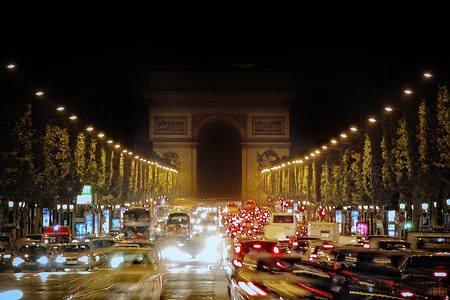
Source: pixelio.de Photographer: memephoto
The most famous street in Europe is found in Paris located precisely between the Place de l'Étoile, the The Arc de Triomphe and the Place de la Concorde.
One can only take lesson from this street as it is a true reflection of a real avenue. The avenue is approximately 70 metres wide and at each end you will find either an important building or even a monument. Many luxury items can be found here, however all major shops from the modern fashion industry are also located here so one can choose between sinfully expensive perfumes to the very current, affordable fashion-labels and products.
Even the ‘normal’ person will find things here, and even if it is not to be an expensive shopping trip it is still worthwhile to pay a visit and stroll along the Champs Elsyees.
The Arc de Triomphe
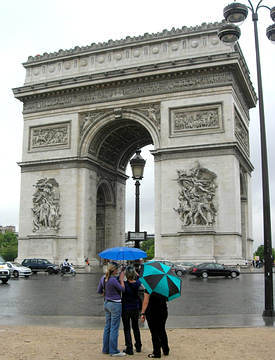
Source: pixelio.de Photographer: Birgit Winter
The army built the Arc de Triomphe in the years 1806-1836 directly in the middle of the ‘Place Charles de Gaulle’. Napoleon himself was a patron of the ‘Arc de Triomphe’ and the famous architects Raymond and Chalgrin executed his requests. Until its completion, the entire appearance was changed six times until it was finalised in its current form. Today the French National holiday is celebrated at the Arc de Triomphe, and the army holds parades here. Beneath the terrace there is a memorable museum which in particular depicts and describes the subject of the French army and the history of the country. The Arc is 45 metres wide and 50 metres high and its great arch is impressive at a total height of 29 metres. If one goes on to the terrace you will be rewarded with a breathtaking view. Not only can you see ‘Notre Dame’ and the Eiffel Tower, but also the entire 12 Avenues which meet at the Arc de Triomphe. Aside from the view it is worth having a coffee or a delicious ice cream with which one can then easily manage the 284 steps to climb up and descend. The monument is well attended and particularly in the warmer months many school trips are made to the Arc, hence at times it can be quite loud. Those who find this a little too chaotic should ideally get on a sight-seeing bus at ‘Charles de Gaulle’ and can enjoy the tour and views of the city from there.
Notre-Dame de Paris
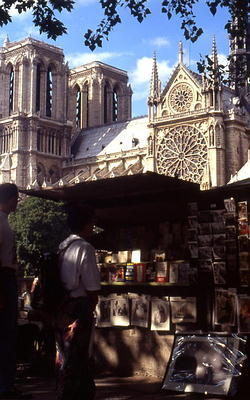
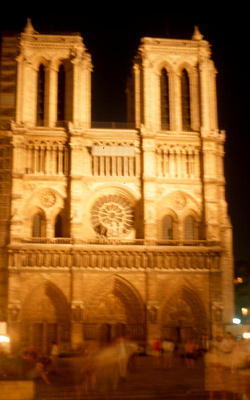
The Hunchback of Notre Dame was a tale from Walt Disney and told the story of a deformed bell-ringer in the great cathedral of Notre Dame. All that happened in the story is of course not true to reality; despite this Notre Dame has its very own magic to offer! The mother of the gothic cathedrals translated as ‘Our Lady’ is how Notre Dame is known. In its place stood a temple over 2000 years ago, followed by a Basilica and then finally followed a Romanesque church.
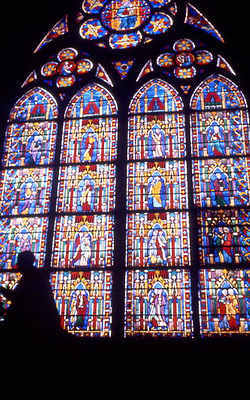
In 1163 the foundations for the gothic church were laid. For this the Basilica had to leave shortly after its creation because France wanted to expand its cities and towns; building mania spread across the country! In 1345 after 150 years the construction of Notre Dame was finally completed.
The kings of that time were crowned in Notre Dame and it is one of the most important monuments in all of Paris! Many thousands of people visit this building every year and even if picture-taking is prohibited in the cathedral – no one takes note of this rule because everyone wants to capture and keep hold of the overwhelming beauty of Notre Dame. Its imposing size is no less impressive. The two towers are 69 meters high, to the roof is 90 metres and internally, the church is 130 metres long, 35 metres high and 48 metres wide. If a church service is held it often becomes very crowded as over 10 000 people can find a space in the imposing cathedral. Notre Dame is most easily accessible via the Metro by getting off at ‘Cite’ station and then strolling along the Seine.
Sacré-Coeur Basilica (The Basilica of the Sacred Heart of Jesus)
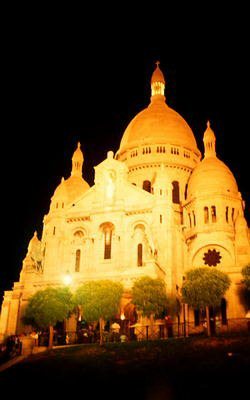
Already by 1914 the building of the Sacre-Coeur was completed however, it was only inaugurated after the First World War in the year 1919. The seat of the Sacre-Coeur Basilica can be found on the 130m high hill of Montmartre. It serves as a famous monument of the Roman-Byzantine period. Its appearance is indescribably beautiful. In white it sparkles towards onlookers and its face illuminates over the beautiful city of Paris.
The Basilica has a total height of 85 metres with the dome on its own being 55 metres in height. The best way to visit the Basilica is on a climb through the Scare Willette; a park whose steps lead up to the Basilica. Those not fond of hill climbing should take the less steep route with the funicular railway. This funicular railway not only has the advantage of avoiding a steep climb, but also offers a wonderful view and so the ride up to the Sacre-Coeur can really be enjoyed. Whoever wishes to enjoy the breathtaking church with all their senses should move their trip ideally to the early morning or to the time of sunset as the number of visitors at these times is not too high. However one should really take the difficult climb over the steps of the Park into consideration – above all these efforts are richly rewarded at sunset as from up there Paris looks even more romantic. After the descent one can regain some energy in one of the numerous cafes, restaurants or in a local pub.
The Sacre Coeur Basicila is most accessible using the Metro – leave the train at the “Anvers” stop, from there simply follow the many road signs or take one of the many buses which stop at Montmartre.
Madeleine Church
The Madeleine Church lies in the 8th Arrondissement and is one of the most well known attractions of the city. The Church is as graceful as a temple because Napoleon’s honour is depicted here in an impressive way. Originally the Madeleine Church should have been a hall of fame for the brave soldiers and should go down in history as ‘Temple à la gloire’. However after Napoleon ended his campaign in Russia, he changed his mind and wanted to build a church. The pompous church was consecrated in 1845.
Standing inside the church, one is immediately reminded of an ancient Roman Bath; the three ornamental domes of the building enhance this feeling and at the end of the building remains a statue of Mary Magdalene. In addition the Madeleine Church is a place at which funeral services are held for prominent personalities, so in 1849 a Mass was held there for Frederic Chopin and in 1992 for Marlene Dietrich.
Les Halles
The History
Les Halles – ‘The Belly of Paris’ as it was known in the mid-12th Century was a huge marketplace where merchants had to sell all of their goods on market days as was the decree of the king at that time; anything unsold had to be given to the poor. As a result, the merchants would take as few goods with them as possible- hence meaning they also earned less. In the 19th Century huge warehouses made of cast iron were erected in this spot, in which the population could purchase all kinds of merchandise that one’s purse would allow. These ensured that both traders and visitors were always kept dry.
The large Construction Site
Above all in the times of wars, these halls were deemed the largest exchange market as there was barely any money available and a period akin to the Middle Ages was revived here. After the wars the merchants who had managed to somewhat survive the years of war were the first to emerge and revive the trade again. At the end of 1969 these large halls were dismantled bit by bit and re-erected 30 kilometres further south. Several plans which had presented numerous ways in which to use this vast square disappeared back into the drawers – at which this large square was named ‘ The hole of Paris’ given that it resembled a giant construction site.
The New Beginning
At the end of the 1980’s the plans of a whole team of architects were translated into action so that this unsightly construction site could finally disappear. A large glass complex was built – the centre of which became a vast open space in which to linger and relax. Many shops, including several cafes and cinemas filled this complex which in no time at all - due to the popularity of visiting cinemas became the meeting point for youth.
The Attractions
One of the most popular attractions is the Cousteau Oceanic Centre which enables many visitors to gain their first impressions of life under the water. In addition, short films about the life works of the researcher Jacques Cousteau are shown in order to show visitors the beauty of life. For school outings, an important physical contribution in the ‘Musée Francais de l’Holographie’ can be seen in which one can easily observe how holograms arise and how these affect the audience. Directly beneath this giant complex is one of the largest and most important transport hubs in Paris at which numerous subways and Metros stop. Just around the corner lies one of the entertainment districts of Paris – the Rue Saint- Denis.
Montparnasse
Founding
Montparnasse – the name alone contains something mysterious, and yet almost every tourist knows that in the early 20th Century one of the most visited artist’s districts of Paris was located here. Consequently, Montparnasse could only have emerged around 1760, as the city officials were charged with creating a large boulevard and hence the flattening of the hill top became necessary. Until that point this hill housed many students who cited all kinds of poems. Around 1910 well known artists like Picasso, Matisse and Amadeo Modigliani would dwell/linger almost daily on this historical boulevard. Until then, the most popular meeting place of the artists was the Café La Rotonde which even today is still a magical attraction.
The art of Montparnasse
After the First World War many artists tried to stay alive in the numerous cafes and bars. They would occupy a table for a few Francs and were not allowed to be disturbed – even when they were sleeping. If there came a time that they could not pay they simply pawned a picture to the host, until they had paid their bill. As a result even today many museums hope to acquire and display several of these now very valuable pictures, as many of these pictures were drawn by the true artists and could not be officially published.
Between the Wars
The time between the wars was especially difficult for the artists and so many later pieces of art were exchanged by the owners in return for a few Francs. However life on the hill soon had its familiar look of excitement, joy and art. Many street musicians also gathered here and would often collectively perform their repertoire for the visitors- and in so doing had already earned their food for the day. The Rue de la Gaîté was one of the liveliest streets with bars, nightclubs, and revue-theatres, in which predominantly soldiers would enjoy themselves during the times of German occupation. Many artists who were of Jewish origin were either murdered or taken to one of the concentration camps – never to be seen again.
What is happening today?
Nowadays there are still a few young artists to be seen and heard in the cafes; several of the artists are also poets and singers, and are able to earn a few Euros from the numerous spectators that constantly visit this famous district. Some of the well known cafes from the past still exist today and are sometimes open for 24 hours around the clock. Worth seeing is the Observatory and the smallest theatre in the world.
Montmartre
The Hill
Montmartre is the name for the highest point in Paris on which stands one of the landmarks of the city – the Basilica Sacré-Coeur and its surrounding village. This hill lies a proud 130 metres above sea level, and can be reached either by funicular railway or via foot up large, wide steps. It lies in the northern part of Paris and has until the present day kept a more rural flair. Moreover, the term ‘Montmartre’ includes the 18th arondissement of Paris and its three incorporated villages- which above all in the summer months are always bustling with activity.
The History
This hill was first mentioned in the Middle Ages as one of the largest gypsum resources was discovered at its foot. In the 12th Century several Benedictine monks built their monastery there whose church- Saint-Pierre de Montmartre to this day is one of the oldest religious buildings. In the 19th Century Montmartre incorporated into Paris but retained its autonomy. During the time after the German-French war the legendary Paris Commune arose in power which was bloodily crushed in the same year. In remembrance, architects at the behest of the French Government built the now widely visible Basilica of the Sacre Coeur - which is wonderfully illuminated in the evenings.
The Artists
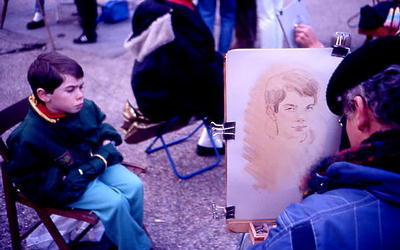
Already in the 19th Century the entire village of Montmartre was a magical attraction for artists of all kinds. Painters as well as poets and musicians gathered here and were enjoyed by the numerous people already visiting at that time, as well as by the locals. Even nowadays at the ‘Place du Tertre’ it is above all unknown artists that mesmerise the visitors, and the small street cafes are- especially in the warmer months very over crowded with visitors, artists and locals. A further attraction here is the small vineyard where slightly sour wine has until now been grown and harvested by various artists.
Attractions
At the foot of the hill is the legendary Moulin Rouge which as a result of a film gained world wide fame- and particularly in the evenings attracts numerous visitors. Even famous artists were fascinated by this small community and hence many of the cafes can boast giving host to some of these well known guests. Some wall mounted photographs still bear witness to these events – a time when Vincent van Gogh, Modigliani and Henri de Toulouse-Lautrec particularly preferred this small village. A visit to this district is particularly worthwhile during the summer months - above all for the younger generation as on the many steps of Montmartre, young people from all over the world gather.
The Panthéon
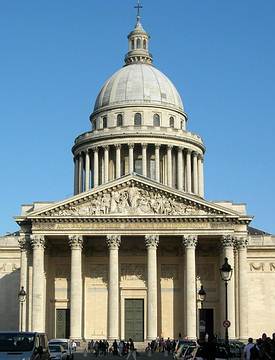
Source: pixelio.de Photographer: Birgit Winter
In the large Pantheon- burial mound (translation of Pantheon) one will find great personalities buried, who participated and made a difference in the course of French history. Names like Marie Curie, Victor Hugo, Jea-Jacques Rousseau and Emile Zola are just a few well known personalities who found their final peace in the Pantheon!
The Pantheon thus serves as the largest hall of fame in France and every year attracts not just visitors but also many pilgrims on their travels towards inner enlightenment. Louis the XV in 1974 gave the order to build the Pantheon. Originally the building served as a church. During the famous French Revolution the church however took on an entirely different meaning. Here the famous French were buried and this tradition is still held to today. The building is particularly famous for the discovery or the evidence for the earth’s rotation by the physicist ‘Jean Bernard León Foucault’. He hung a pendulum in the dome of the Pantheon with which he was able to demonstrate the rotation.
Despite the Pantheon being France’s largest Hall of Fame, two great personalities are not buried here. Napoleon and Charles de Gaulle were even bigger personalities and could hence only be buried at greater places of nobility. Napoleon found peace in under the dome of Les Invalides whilst De Gaulle was buried in his home town.
The Statue of Liberty
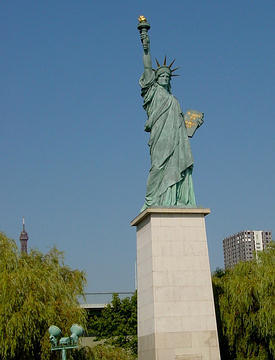
Source: pixelio.de Photographer: Dieter Schütz
The Statue of Liberty in France is a small version of New York’s ‘Miss Liberty’. In the middle of the river Seine stands the little sister of the giant statue - located at the southern end of the ‘Île des Cygnes’ (Island of Swans). Hence it lies not far from the famous Eiffel Tower. Three years after the Statue of Liberty was erected in New York, the Statue of Liberty in France was inaugurated – in the year 1889. The original was given as a gift to the Americans for Independence by the French and hence the French statue also points towards the direction of the New York harbour.
In addition three more ‘liberty’ statues can be found in France. The first can be found in the ‘Musée des Arts et Métiers’ and served as a template for the larger Statue in New York. A second Statue of Liberty stands in the park- ‘Jardin du Luxembourg’ and measures approximately 2 metres. The last one is not far from the The Eiffel Tower – on the bow of a boat located on the right hand side river bank of the Seine.
Hôtel de Ville
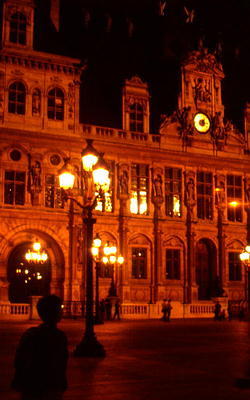
The Hôtel de Ville is the Paris City Hall. Since 1977 it has again been occupied by a mayor – as for a long time Paris had no mayor! The very large administrative centre regularly hosts large receptions and events. During the middle-ages, public executions, demonstrations and colourful festivals took place on the forecourt of the Hotel de Ville. Francis I in 1953 commissioned the construction of the building which was later extended – however it was very important to ensure that the building was preserved in a Renaissance style.
In 1871 the building burnt down however a new city hall – in the new style of the renaissance, was erected. The façade of Hotel de Ville is particularly impressive as this was decorated with approximately 150 statues of well known personalities. The interior reflects the period of the Third Republic from 1870 to 1939.
The Louvre
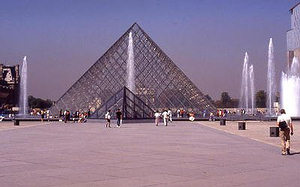
Over four million people annually visit the largest museum in the world and thus take a glimpse into history. Impressively, here one can see the development from the 12th Century to modern times - and the visitor will certainly not be bored, as with the help of sculptures, paintings and various representations one can gain a basic understanding of different eras. Above all the subject of the ‘Egyptians’ is more than just popular. Entirely new insights are gained by the visitor has he wanders through the Egyptian history and examines the work of farmers at the Nile and admires the Egyptian gods. The ancient world is looked at in particular detail and amongst other things; one will also find the old Babylonian and Roman antiquities.
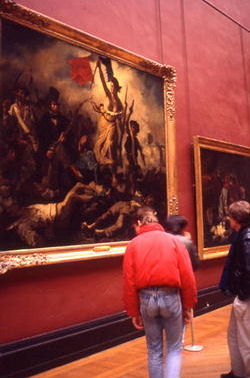
If that was not enough, one can also admire an immensely large collection of paintings. This collection is organised by countries and offers the curious historian, glimpses into old England, Holland, Italy and Germany to name but a few examples. Especially popular is one of the most famous paintings in the whole world – the Mona Lisa. This work of art- created by Leonardo Da Vinci in 1505 has a permanent place in the Denon wing of the Louvre. Other well-known artists are also immortalised here through their work. To be found are art works by Lukas Cranach, Dürer und Rembrandt. Even upon entering the old museum the visitor is greeted by a fascinating sight; a glass pyramid designed by the American super-architect leoh Ming Pei. The museum aims to represent a combination of modernity and antiquity; the glass thus symbolises the modern world!
Musée d’Orsay
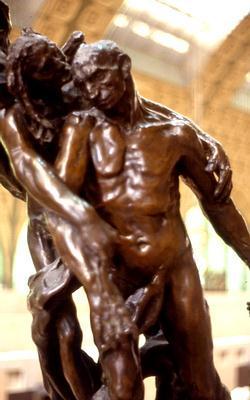
History
The site on which today stands an impressive museum already has quite a lively history. At the beginning of the 17th Century this area was first mentioned as a garden for Queen Margaret of Valois – which after her death was then divided into several plots in order to build several town houses and the Grenouillière harbour. In the 19th Century a large barracks was built over the entire site which several years later was divided into the audit office and the state council. During the dispute with the Paris Commune, these houses became a victim to flames.
The Station
The railway company was given this site by the state in order to build the Gare d’Orsay station. During the World fair of 1900, the station was officially opened and at its time was viewed as one of the most modern railway stations. Over the next few years the area surrounding the station became an international meeting point for the youth and experienced a massive exchange of people. At the beginning of the war, the station was locked as it was no longer suitable for trains that had in the meanwhile become increasingly longer. After the war at first only the hotel was in use before the entire area became the setting for numerous films.
The Museum d’Orsay
At the beginning of the 1970’s however the hotel too was closed, hence one had to think about what to now do with the site – for a time demolition of all the buildings was in discussion in order to build a huge hotel complex in its place. However as interest in the buildings grew in the 19th Century, the site including the railway station gained listed status. As a result several town councillors thought of the idea of a museum – in particular for not so well known artists. In 1977 it was thus decided by the president of the time- Valéry Giscard d’Estaing to convert this site into a monumental museum.
The Present Day
The subsequent French President Francoise Mitterand had the honour in 1986 of inaugurating and officially opening this building. Already by 2001 the first repair works had to be carried out which, were only completed two years later. Over two large floors various sculptures appeared in addition to witnesses of existing architecture including furniture as there was finally enough space available to accommodate everything in the large halls. Above all the on the second floor- due to reasons of static, primarily paintings and a few several works of literature were displayed. Both young and old generations blend well in these buildings.
The Musée Rodin
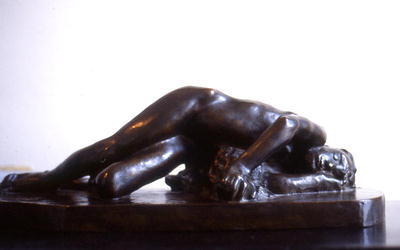
The History
From the outside this museum is reminiscent of the glory days of the 18th Century as here the king and other high ranking representatives of the former government would come here and organise festivals. In 1732 the building was changed into a hotel for the financial expert – Abraham Peyrenc de Moras and for the remaining months of his life served as a domicile. At least twenty years later this hotel was simultaneously taken over as a residence by the Duc de Birons and the Marechal de France - who enjoyed having hunting parties and hence many a glittering celebration occurred there.
The 20th Century
From 1904 the palace became the accommodation for numerous artists including Auguste Rodin who aside from painting made it his mission in life to save such palaces from demolition as they served as witnesses to the glorious era of the Renaissance. Auguste Rodin needed an entire seven years to convince the Parisian authorities not to allow the building of city apartments on this site. When in 1916 the government finally gave in and Monsieur Rodin solemnly handed over the palace, no one knew at that time how ill Rodin had become over time. From that date his long-serving secretary Rainer Maria Rilke took over all correspondence.
The Transformation
Several days before his death, Auguste Rodin was able to experience seeing the majority of his art work and correspondence finding its place in the Hotel Biron. Over time works from other artists came into this museum converted from a hotel- including the work of his long-term companion Camille Claudel. It was this in turn which ensured that the private collection of Auguste Rodin – including the previously undisclosed work of his long-time friend Vincent van Gogh, found their special place in the present day museum.
The Present Day
It wasn’t until 1960 that the French president Charles de Gaulle insisted on renaming the former Museum Biron into the Museum Rodin in honour of the artist Auguste Rodin. This document is located at the entrance of the museum. Today over 6000 statues now stand in all of the rooms – including Rodin’s most valuable piece of work – ‘The Thinker’, which even whilst he was alive was always the centre piece of Rodin’s life. Another very valuable, yet unfinished rarity which was given in person by the French government is the monument for Victor Hugo, which was originally meant to find its place in the Pantheon. However at the request of Victor Hugo’s daughter and the grandson of Auguste Rodin, it found its place here in this museum instead.
Opéra Garnier (Paris Opera)
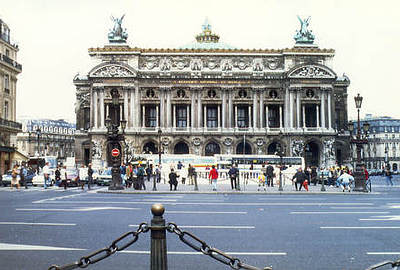
Source: pixelio.de Photographer: Anja Semling
Nothing has made the Opera Garnier more known than the myth of the “Phantom of the Opera’ after a series of strange incidents such as noises from the cellar and an unexplained accident. For a long time after this no one ever ventured into the basement of the Opera house. The Phantom of the Opera is even today still on everyone’s lips and now makes its rounds around the world in the form of a musical- amazing both young and old. Ballet performances are now primarily held in the opera house however one can of course still admire operatic performances here too.
The Opera Garnier was named after its architect – Charles Garnier and was opened in 1857. However its construction was very difficult as it was almost impossible to set firm foundations for the building. The reason for this being the underground lake, which is also known from the Phantom of the Opera because the phantom rides across this lake in a boat! A ‘real’ lake this is not however, rather it is a ground water basin that from time to time is cleared out by the fire department. Up until 1989 the Opera Garnier was the largest in the world, after which the Opera Bastille took its place.
The Pompidou Centre
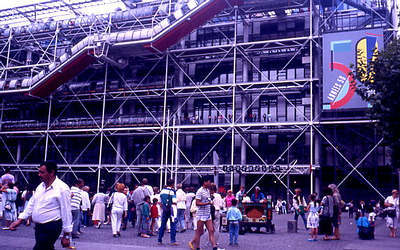
The Pompidou Centre, which is actually called ‘Centre national d’art et de culture Georges Pompidou’ lies near the Forum des Halles and precisely in the ‘Beaubourg’ district. Beaubourg is well known mainly for its good restaurants and pubs and each visitor has fond memories of a cosy hour with a glass of wine in beautiful surroundings.
George Pompidou, a former president had the centre built as a cultural centre. The famous and renowned architects Richard Rogers, Renzo Piano and Gianfranco Franchini designed the Pompidou in their times and it was finally opened in 1997.

On first seeing the Pompidou, it comes across as fairly chaotic because everything which supplies the building like electricity, water, the escalators and even the ventilation systems have been built on the outside so that on the inside of the building, the walls can be moved and changed as desired.
Above all, a large part of French knowledge and history lie here, as in the ‘Bibliothèque publique d'information’ (the library of public information) all desired information can be obtained, in addition to a popular starting point of the Pompidou –the ‘Musée National d'art Moderne’. Here one will find a sophisticated and modern art museum with an extensive collection of art from the 20th Century.
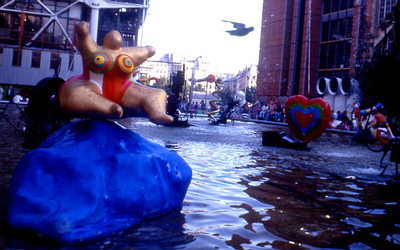
The Pompidou Centre is regarded as a desirable location for ‘show-men’; hence artists and musicians perform here at regular intervals. Directly next to the Pompidou visitors will find another work of art – the famous Stravinsky Fountain which, with its colourful and graceful figures is not just exciting for children.
La Défense
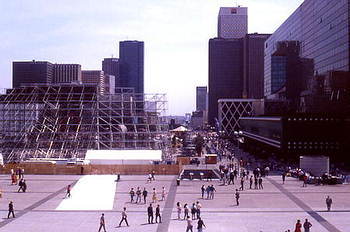
What is La Défense?
Europe’s largest business district La Défense lies in the west of Paris and is a large office area. The pedestrian zone located herein is 250 metres wide and over 1 km long. Planning for this district had already begun in 1955 whilst the actual construction did not begin until 1963. However, for this to happen a large part of the site had to first be demolished as the working district and large factory area of three companies still lay there. In order to give you an idea of the size of this space - including the green areas, the entire site is 43 hectares.
The History
The name of this district was derived from a monument which the city authorities commissioned in honour of the fallen soldiers of the German-French war who defended the city vehemently. In 1883 the bronze sculpture was inaugurated however, due to construction work was removed, but was later placed in its original spot. The first mention of the large hill was at the time of King Ludwig XV as a central avenue was created spanning from the Champs Élysées to the top of the hill. Well into the 19th Century a windmill could be found on the highest point of the hill.
The Business District
Construction of the large business district began in 1958 with the establishment of the building authority EPAD. The task of this independent authority was to discharge the existing business district around the ‘Arc de Triomphe’ and relocate a large part of the centre to this area. At the same time due to a private initiative, the CNIT Exhibition Centre was created which was a pilot building. As per the EPAD, to begin with 850, 000 square metres of office space were to be built in various towers - with Manhattan as a model. One of the main components of La Défense was a huge flagstone – 40 hectares in size that was also to include the pedestrian zone. Parking, road access and other infrastructure was built to the edge of this huge flagstone.
The present day
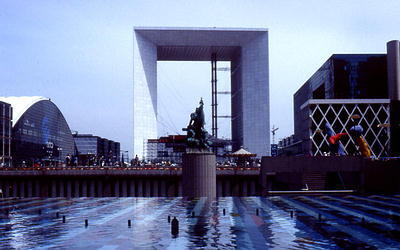
In 1989 for the 200-year anniversary of the Revolution, ‘Le Grand Arche de la Défense’ was built - a skyscraper clad with white marble that even from a great distance could be seen as the entrance to La Défense. With this structure the large axis of Bastille-Louvre-Champs-Élysées was completed whilst at the same time inaugurating the expansion of this district. Today La Défense – spanning over more than 80 hectares is one of the largest office spaces in the world in which however also lives a large portion of the working population.
The City of technology and science (Cité des sciences et de l'industrie)
The ‘city of technology and science’ offers a one in a kind experience. The entire technical culture of France meets here in an exhibition centre and it is not only children and school excursions that have the opportunity to try out, to touch and to admire technology. Know and understand how something works in technology and science - all at close proximity! The largest popular science museum in Europe offers all science and technology enthusiasts a wide range of knowledge and variety. Here everyone has the opportunity to internalise compact knowledge and to understand scientific connections.
Consequently you will find the knowledge here not just concentrated but also divided into many rooms and age groups. The ‘Cité des Enfants’ is especially suitable for children. Here children between the ages of 3-5 and 6-15 have extensive opportunities to try out anything which relates to technology. However the presentations about space, the planets and the universe also serve as spectator-magnets. It comes as no surprise then that thousands of people annually visit the museum. The museum is so large that each subject area, be it bio-technology or life on earth roughly has enough size and space for its own Museum! Next to the science museum is a large cyber-base, a media-library and many more cultural and scientific institutions. 360 metres in diameter has e.g. the large glass ball next to the museum which serves as the open-air area for IMAX films.
New National Library of France (Bibliothèque nationale de France)
The Bibliothèque nationale de France is found in ‘Francois Mitterand’. It is France’s state library and its building was commissioned in 1988 by the former head of state Francois Mitterand. The library then originated through the direction of the architect Dominique Perrault. The library is a whole 60,000square metres. It has been built at right angles and in the centre of its glory is a 12,000sq metre garden; whoever strolls through the library can admire its beauty as it is visible from the inside of the building. The atmosphere is as a result much calmer and contemplative. At each corner of the library is a tower of 79 metres in height, made of glass and in an L-shape – meant to symbolise an open book. Unfortunately the new library also angered many French citizens. The reasons are obvious; firstly, there were several planning errors and secondly, the construction of the library was greatly delayed.
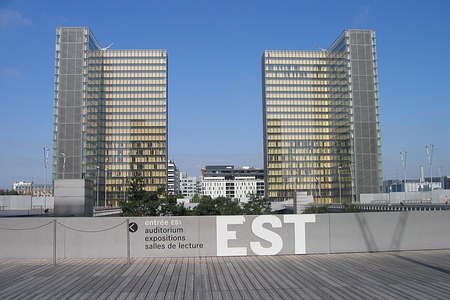
Source: pixelio.de Photographer: Julien-F.-D.
The four glass towers have the names: Tower of time (Tour de temps), Tower of Laws (Tour de lois), Tower of Numbers (Tour des nombres) and Tower of Letters (Tour des letters)
The large collection in the National Library owes its thanks to the manuscript collection of King Karl V from 1368 which, were kept in the Louvre. In today’s Bibliothèque nationale de France, all important documents are collected and kept and should be accessible to everyone. As a result the inventory is immense. Currently 30 million books are housed in the National Library.
Night Life of Paris
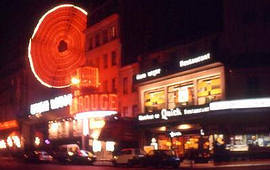
Every traveller from any corner of the world, in one way or the other, dreams of spending a couple of days and nights in one of the most wonderful tourist destinations in the world. With an array of affordable flights to Paris offered by a number of airlines, coming to this heavenly place is now made easier. Aside from its romantic scenic spots, Paris has a lot more to offer! Check out this website to know the other fun and memorable activities you can do here.
An evening in Paris is more like an adventure than an outing. Particularly around Trocardo and the Champs-Elysées there are many bars, clubs and night-clubs which are unfortunately often overcrowded and overprices. The best music venues and the infamous Moulin Rouge are paradoxically found in the red-light district of Paris. The can-can is especially worth a visit because no-where else do ladies understand better how to swing their legs and skirts!
The most breathtaking view of Paris in the summer can be seen in the district of Sacré Coeur. Those who would prefer something a little quieter should resort to Marais. Homosexuals prefer this area – the most famous gay district of Paris lies here after all! The city magazine ‘Pariscope’ informs young people and tourists about current festivities and also about the opening times of respective localities.
Cafes and bars are actually one and the same in the city of love, whereby one does not however have to go without freshly tapped beer. Unfortunately, many young people find Paris too boring, as a result the party scene is often gathered in private homes or on the streets. Next to Berlin and London, Paris is a little too stuck in the past according to critics. As a result Paris is not considered the Mecca for young people, rather is more considered as a dreamy, sensual city with a lot of history. Paris and The Paris nightclub Association are planning more party and fun for the future. The famous attractions aside, the city also has many trendy locations to offer e.g. the ‘VIP Room Theatre’ or the ‘Showcase’. In Paris – the most visited city in Europe, there is something for everyone – whether you prefer a more easy going-groovy party or more contemplative classical music.
Even from a culinary perspective, Paris has more than just a lot to offer. Depending on which flavour you prefer, whether the budget is small or large one can look forward to choice and exquisite, varied cuisine. In the centre of the city is the ‘man of the world’ - everything one could wish for or desire and similarly in slightly more remote areas, the average holiday maker will also find exuberant and delicious cuisine.
Of course Paris also has fast-food and the old traditional French Kitchen - one does not always have to eat frog’s legs or snails! Paris is the city of lights and as soon as it gets dark, one will see exactly why this name has made the city so famous.
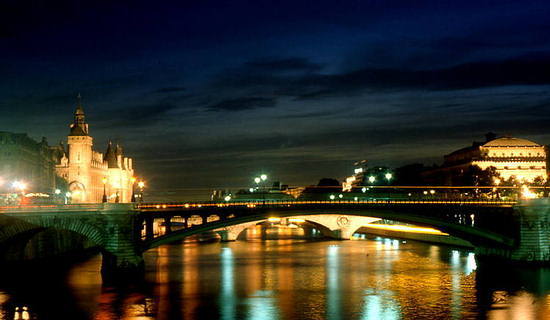
All the monuments at this time shimmer in the bright lights and even the charming, ornate streets with their cafes and restaurants create a wide range of light-games. At the end of a long day, the French often meet in a café with their friends so that they can have a fun and a relaxed end to their evening. The nightlife starts here when other Europeans go to bed; and this is not just at weekends, rather every day! Afterwards most of the French go home, however many will then also pay a visit to a theatre or go to the cinema to watch a movie!
In France one will always find many events and celebrations. To avoid missing out on anything, look in the train stations and kiosks as announcements for up-coming events can be found everywhere. Many events in Paris do not begin until 21 hours because the French are used to starting their days after work with fun and joy.
Paris has many theatre productions on offer each week. Many of the ticket offices are situated close to the ‘Right Banks hotels which however should be avoided as many of the tickets are overpriced here. The cheapest tickets can be bought directly from the box-office. Students – on showing a student ID card will receive discounts or can purchase ‘last-minute’ tickets.
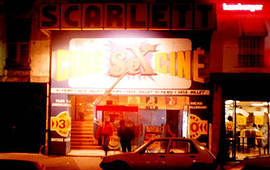
Particularly popular with younger people is the Café Brasserie St-Regis, as it stays open till late. Here one can still enjoy a coffee or a freshly tapped beer. Even more interesting is if one dares to do things the way a Parisian does; a mug of beer to take –away and then strolling through the city.
Whoever likes barley drinks is advised to pay a visit to the ‘Sous-Bock Tavern. Here one can choose from a selection of just under 250 varieties of Beer and 20 different varieties of whiskey! Popular with younger people of the ‘nouveau riche’ is the ‘Sanz-Sans’. Wild –party kids celebrate to trendy jazz-grooves until the early hours of the morning.
Above all young people like the many different bars and pubs. The modern Parisians like to imitate other ‘worlds’ and hence year after year new bars sprout up out of the ground which, with an English, Australian or American flair really attract the foreigners. Paris locals however like to conduct pub crawls (and this does not mean a relaxing coffee drinking!)
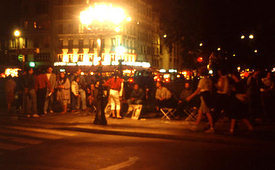
The gay and lesbian district of Paris is growing inexorably in Paris. There are countless pubs and clubs which however come and go so quickly that even the trendy ‘Magazine’ does not manage to keep visitors and locals up to date! The true nightlife however can be found in the east in Ménilmontant. This is an area with many sophisticated restaurants and pubs. Here the young scene reigns and it is only here that you will find the latest hits and the trendiest fashions of the season. However even the centre of Paris as the heart of the modern night life has numerous cafes, pubs and clubs to offer.
Regardless of whether it is live music, Dance and Trance, House, Pop or Funk, in Paris everyone will find something and with an appropriate guide (which as mentioned can be found all over Paris or even online), the nightlife in Paris will serve as an unforgettable experience. It is not for nothing that Paris is the ‘City of love’ and the most visited city in Europe!
Moulin Rouge
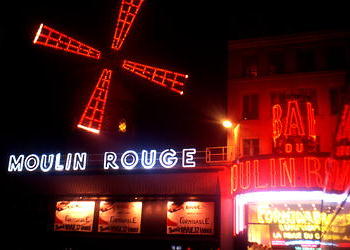
The Moulin Rouge in Paris is particularly well known. It is one of the biggest attractions of France’s night life. The cabaret building lies in the district of Montmartre and was built in 1889. A red windmill can be found on the roof – hence the name Moulin Rouge. The Moulin Rouge is well known for the detailed posters created by ‘Henri de Toulouse-Lautrec’ and of course for the famous Can-can dancers – who caused a furore!
The Moulin Rouge lies in the centre of the entertainment district of Paris, as a result it is not surprising that over the course of the years ‘frivolous’ performances often took place. This however neither caused any harm to the fame or reputation of the cabaret. As a result its memory has always been kept alive through cinema productions, operas and theatre performances. Many tourists visit the cabaret annually – which has 850 seats; many also believe in the ‘Moulin Rouge Myth’.
The dancer La Gouloue is particularly notable for making the Moulin Rouge well known during the time of the Can-can. Even superstars like Frank Sinatra or Maurice Chevalier could not avoid it and set foot in the cabaret. In 2001 a cinematic film made the ‘myth of Moulin rouge’ even more public.
A particular highlight is the diner-show at the Moulin Rouge, which at 175 Euros (2010) is expensive however, has much to offer. Following this it is ideal to enjoy the current show and let yourself get carried away by the beauty of the Cancan dancers
Les Invalides
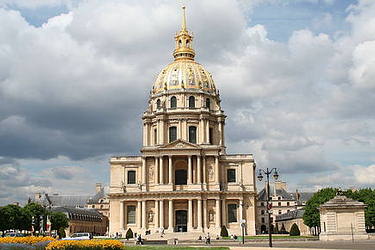
Source: pixelio.de Photographer: 1A-Phoenix
‘L'hôtel national des invalides’ is what the French call Les Invalides – which lies in the 7th Arondissement and in the immediate vicinity of the Eiffel tower. In the Invalides grave stones, monuments and museums can be found and above all one will find here important attractions of the military or of France’s military history.
Originally the ‘hôtel national des invalides’ should have accommodated the war-injured and as a church was also meant to be built, the ‘Eglise Saint-Louis des Invalides’ was built without further a-do. The dome of Les Invalides can be illuminated given to the fact that the dome consists of two layers.
Napoleon was buried here and one can see the crypt of Napoleon when using the stairs behind the main altar. One can also see reliefs here which represent the transfer of Napoleon’s body to Paris. On the large pillars of the crypt one can admire all of the great military successes in the wake of Napoleon’s command.
Père-Lachaise Cemetery
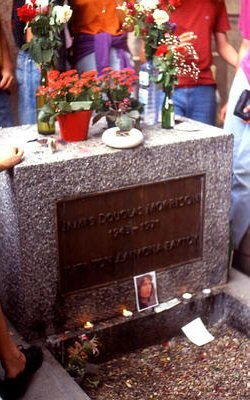
Many famous people have found their final resting place in the world’s most famous cemetery – the Père-Lachaise. This includes prominent personalities like Yves Montand, Oscar Wilde, Edith Piaf, Maria Callas, Frederic Chopin, Jean Moulin, Marcel Proust and Jim Morrisson. The cemetery is one the quietest places in Paris, and its traversing footpaths have brought structure to the cemetery.
In the cemetery there are chaotic pathways which follow no particular direction. The graves on display are in the form of houses or mausoleums to be wonder, with thrones, tall trees and marble graves in between. Visitors will be enchanted by a truly incomparable light-and-shadow-game. Occasionally the cemetery can be very creepy.
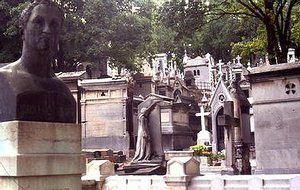
In the 19th century the Père-Lachaise Cemetry was opened as many of the smaller graveyards had to be closed and a larger one had to be opened. Next to the cemetries Montparnasse and Montmartre is the Père-Lachaise cemetery it being the largest in Paris. When entering the graveyard you receive a map which guides you past the graves of well known personalities. The graves of the most famous are often heavily adorned, as many fans lay flowers and even vinyl records.
Catacombs
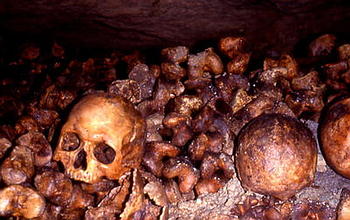
Large, branching passages can be found underneath Paris. Sometimes half of the city can be reached underground and hence one does not have to even come into day-light to walk through Paris. The remains of the ‘carrières’ (quarries) are mystical and mysterious and were created in the 13th century as lime-stone was removed from underground. As a result this formed passages 330km in length. Unfortunately these tunnels were never properly secured and consequently, in the 18th century entire streets collapsed!
After the middle ages Paris grew steadily and as a result space for corpses was running out hence bodies were exhumed a short time after burial. Although this created more space the stench this created was unbearable. Hence the corpses were from 1795 brought into the Catacombs. At first the remains of the bodies were simply poured into the tunnels, however after a short time the grave diggers began to make obscure figures and formations out of the skeletons. Meanwhile visitors can visit many of these artistic graves. However, the majority of the catacombs are not open to the public as the tunnels are occasionally so intertwined that one can quickly get lost. Other wells are used for electric cables or have been expanded for the Metro. Still other tunnels are used for the French national bank which deposits some of the state treasury there.
Parisian Sewers
Underworlds
When one thinks of the sewage system of Paris an image of underground passages will probably spring to mind, in which the legendary Belphégor would carry out his mischief and then retreat back to the lowest levels. The sewage system – documented since 1850 and created by G.E. Baron Haussmann however, has nothing to do with this mysticism. Over a total length of 2,100 Kilometres – something which was unthinkable at the time, Haussmann was the first to achieve the creation of a double water supply network in which sewage water was taken away from households, whilst at the same time transporting fresh water into households.
The Network
Several reservoirs of varying size lay directly under the city, positioned at significant locations so as to enable constant regulation of the water level. Consequently, throughout the years, the most important buildings in Paris have still not experienced flooding due to torrential rainfall. Additionally, the reservoirs ensure that the population has more than enough water available to it. There was only one notable problem with flooding, this being at the city’s cemeteries which were as result, re-located to the so-called ‘catacombs’. Thus far this hygiene problem could not yet completely be eliminated.
The other side
Paris however has another side to offer in particular for the younger generation in that there truly is an accessible underworld; lovingly named "Les Égouts de Paris” by the local population. In the area accessible to visitors, episodes about the mythical demon Belphégor were filmed – who during the night would haunt the Louvre and who during the day would take rest in these alley ways. Unfortunately during filming it was not particularly quiet - the echo down there being a major factor. Incidentally, the Americans took these episodes as an opportunity to 25 years later create and shoot the story of ‘The Beauty and the Beast’.
The Exhibition
A city beneath the city has almost emerged underground, as one part of the sewage system – it being hygienic and clean incidentally, has been used to display a small exhibition for visitors about the history of the sewers. Unfortunately however, one can not simply lift a man-hole cover at one end of Paris and disappear beneath; rather for this exhibition there is only one entrance- at the Pont de l’Alma. Both the entrance and exit can be found here. This journey into the Parisian underworld is both a once in a life time and highly interesting experience however, is not totally without cost. Incidentally some years ago, in a different part of the sewers a fully grown crocodile was found whose origin was unfortunately never discovered!
Shopping: Antiques, Books, Flea Markets, Department- stores
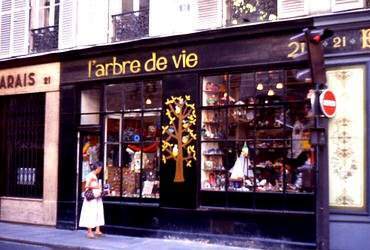
Antiques
In Paris although there are several antique stores, only three are absolute highlights. ‘Drouot’ is the name of the most famous antiques-auction house in which annually more than 600,000 treasures are exchanged by owners – the majority of which is jewellery. In the ‘Depot de Vente de Paris’ – a large warehouse with 3000 square metres of exhibition space, visitors can get hold of genuine antique bargains. From furniture to jewellery to paintings, visitors will receive items at very reasonable prices. The ‘Village Saint-Paul’ comprises of several joined back-yards with 90 stores in which guests can obtain almost any antique object that they are looking for.
Books
Shakespeare & Co. is called the most famous book store in Paris – which also has a whole array of antique books in its inventory. Here visitors can obtain almost anything that has a literary name and rank. Another very good address is that of three of the most versatile book stores in Les Halles, in which visitors can expect to find almost exclusively the work of French artists. For those who prefer things a little more eccentric should take a walk along the river bank of the Seine where one can obtain both comical as well as serious literature at reasonable prices.
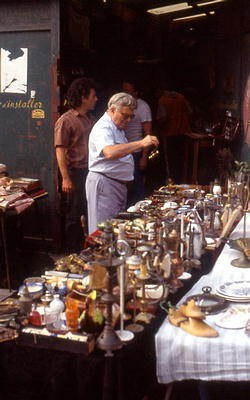
Flea markets
‘Puces de Saint-Quen’ directly above the ‘Clignancourt’ metro station is the most famous flea market in Paris and at the same time the largest of its kind in the world; located within an entire district and measuring a total of 15 kilometres. However Paris is also home to the smallest flea market in the world – ‘Marches des Rosiers’, comprised only of 20 stalls on two floors. The ‘Marche d’Aligre’ is a flea market with a difference. Apart from Monday, this market is open from morning to evening and young people in particular can also obtain some bargains.
Department Stores
Whoever speaks fashion says ‘Colette’. This prestigious department store is the ‘hippest’ of its kind - in which great designers like Yves Saint-Laurent and Karl Lagerfeld showcase several times a year. When it comes to shoes ‘La Fayette’ is the world’s most famous department store; whoever crosses its threshold is very high profile and has a black Master-Card! ‘Le Printemps’ is one of the most prestigious department stores in which visitors are never short of amazed because here it glistens and sparkles at least once on each floor. This true temple leaves little to be desired.
Flea Markets
Marche au Puces des St. Quen
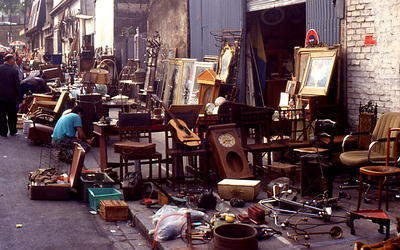
What better whilst on your trip to Paris than to obtain a souvenir or better still grab a real bargain at a place that you will unfortunately not see so soon again? For this the French capital has a number of flea markets to offer – including the largest flea market in the world. This is located in the district of Saint-Quens and lies directly at the last metro stop –‘Clignancourt’. Here visitors can look at an approximately 15km worth of stalls next to one another, and admire some antiques which have in some cases been pulled out of the back corner of a cellar.
The Halls
It is truly a labyrinth of all kinds of stalls. Those who would prefer to move out of the hustle and bustle of the enormous crowds of people and avoid the slow pushing and shoving, should visit as early as possible to look at the goods of the approximately 2500 merchants which, occupy a total surface area of around 7 hectares in large halls that stand in close proximity to one another. From 11am the aisles fill up at a rapid speed – after all over 11 million people annually visit this both traditional and enormous market.
Marche Vernaison
Somewhat smaller, but much older and most colourful is the flea market of Vernaison which still draws in around 300 traders. However, as nice as some things might look – not everything is as antique as it appears as many of the traders attempt to cunningly sell their plagiarised crafts – offering them at apparently reasonable prices. This flea market is the oldest market in French history and dates back to the beginning of the 12th Century. Directly in the centre lies one of the most popular flea markets – Chez Louisette which owes its name to the visit of a King and in which an atmosphere is quickly created when the numerous street performers sing their songs.
Marche Biron
In sharp contrast to the aforementioned flea markets is the particularly elegant flea market Biron, which has approximately 200 stands and is the most expensive of all the markets; here only new and very well preserved goods are on offer. However Paris also houses Marche des Rosiers - the absolute tiniest flea market which only consists of 20 stalls on two levels. As a result this market has specialised in Art Deco and art nouveau. Clothing from different time periods can be found at the Marche Malik.
Paris by boat
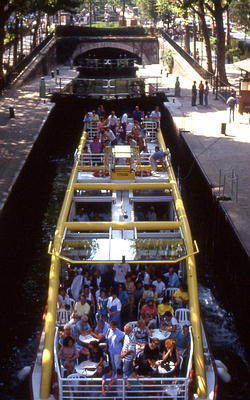
The Boats
The "Bateaux-Mouches" – the glass ships, also belong to the attractions that Paris has to offer. Almost every visitor to the city will take a boat ride that over 120 million people have already done. Actually these ships, whose decks are made of batons and glass for a better view, belong to the hallmark of Paris as even on the post cards on which the sites of Paris are depicted; one will find a picture of one of these boats. For the many tourists these boats that slowly sail along the Seine are the subject of great demand.
The History
The business idea for a ride on the Seine came from the Parisian business man Jean Bruel –who in 1900 bought the old boat – the old Mouche from the leftovers of the world exhibition and slightly refurbished it. The name of the ship is based on the name of the former shipping company/ocean liner Mouche in Lyon. The idea of the businessman was enthusiastically received – so much so that Bruel immediately bought another ship to use as a second excursion boat that would sail up and down the Seine. Three years later the first glass boat was ready to sail and meanwhile a total of 14 ships now sail the Seine.
The year of celebration
On the occasion of the 60-year celebration in June 2009 the French president Sarkozy insisted on an official speech in which the one-week celebration was ushered in that gave visitors a discounted price for the popular boat rides.
For this time period the evening dinners offered on theses boats were already fully booked by the end of 2008. During the season of the 60-year celebration, the company- managed by the daughter of the late company founder Charlotte Bruel-Matovic, employed a proud 600 personnel. Ordinarily during the summer only 400 people are usually employed, of which a total of 200 employees are permanent members of staff.
The Trip
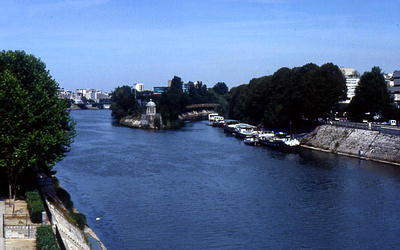
At a slow 6 kilometres per hour the passenger ships slowly chug up and down the Seine; their captains have all the time in the world when they e.g. have to wait for the bridge over the Saint Martin canal to open to the side. The captains simply ignore the honking horns and loud protests of motorists, as per the captain’s motto “good things take time”. Consequently in 2007 a heated discussion took place in parliament as to whether this luxury of rotating bridges could really be afforded in this day and age. A trip on the Seine in one of these glass boats is truly a unique experience.
Parks in Paris
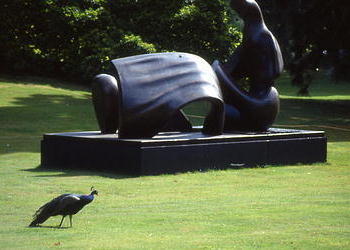
Bois de Bologne
What is Central Park for New Yorkers is the Bois de Bologne to Parisians. With a total of 8.45 km² it is the largest urban park in Europe. In the 1900’s the younger generation in particular would amuse themselves here – either to read, to listen to the music played by the many musicians, or simply just to sit and chat in a peaceful environment. Unfortunately this park is intersected by several roads because there are hiking, bike and horse trails on which the visitor can also simply relax.
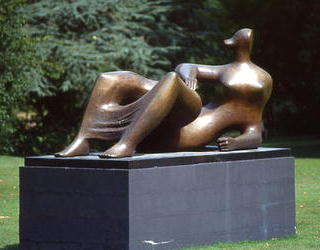
Jardin du Luxembourg
This park is the most famous in Paris and lies very close to the University of Sorbonne therefore it is often used by students for intellectual discussions. Throughout the whole year visitors can take a seat on the provided chairs and enjoy the sunshine whilst the children can ride in the extra large barrel boat. Already by the start of the 17th Century at the behest of Maria of Medici, the park and bordering palace were created in accordance to a Florentine model; the palace was to be used for celebrating glittering parties before relaxing in the park. Today the palace is used as the seat of the Senate.
Jardin des Tuileries
The baroque style park was created in 1666 as a front garden to the Louvre. This park was one of the first in the world and thus indirectly served as a template for other later parks. In this park there are statues of 18 women which can be found in between the finely trimmed hedges and are almost regarded as unreal. In this park one will mainly find the middle-aged and older generations who simply want to enjoy the sunshine or who have come here for a casual chat.
Jardin des Plantes
If Louis the XIII had not existed then neither would this park! It was this king who enabled the creation of this park in 1633, as a teaching and healing-herb garden for the medical students at that time. This park is thus one of the proofs of the hitherto largely unknown social commitments of a king, as before this time it was never heard of that a French king was committed to the general population. As a result it came as no surprise that in the 19th Century the government at the time allowed the accommodation of the natural history museum here. Due to an increase in the knowledge of natural history the contents of the museum could always be expanded.
[ © Das Copyright liegt bei www.europe-sightseeing.com | Informationen und Sehenswürdigkeiten von Europa, Städte und Landschaften]
nach oben | Home | Sitemap | Impressum & Kontakt
©: www.europe-sightseeing.com